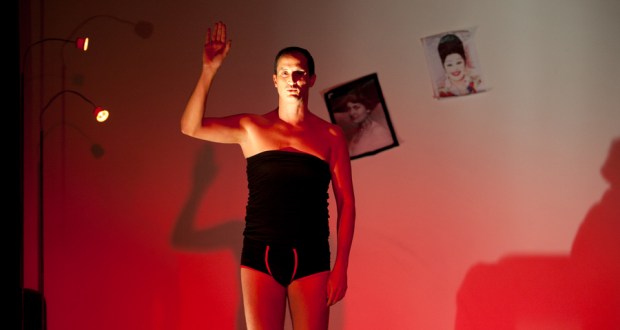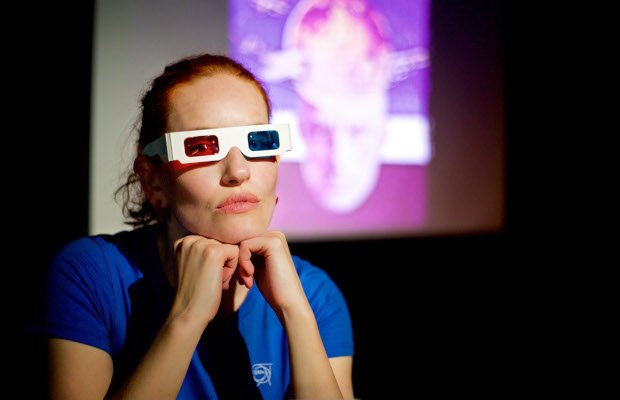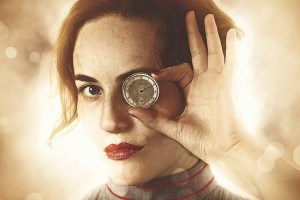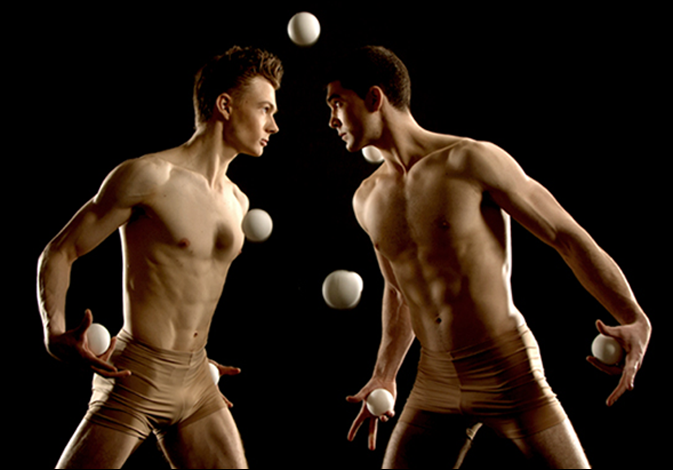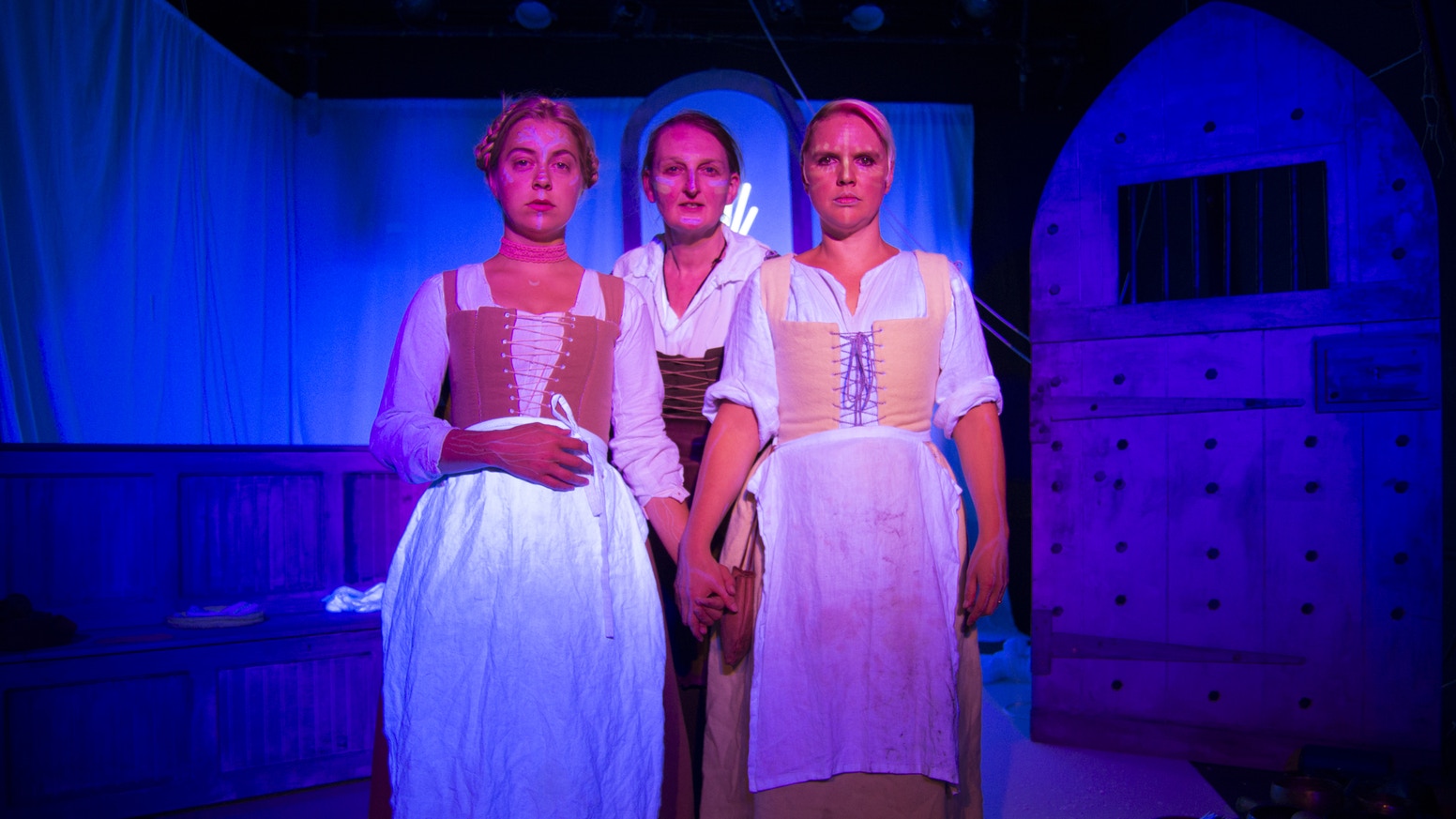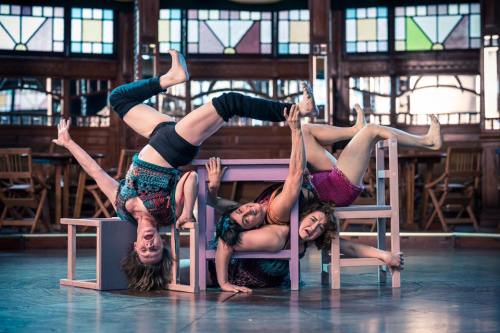A person (male body, female presence) enters the space with a suitcase. Clothes are laid out ceremoniously – a white silk kimono, a pink satin dress, a tasteful 1920s style blue sequinned number. A sweet little black velvet hat goes on: the performer now seems most definitely gendered as female. A mid-2oth century push button telephone is pulled out of the case, the handset on its wire dragged across the floor. The light is ‘garish’. It is, says our storyteller, a ‘mediocre’ crime scene.
The phone rings. Hallo, Hallo? We only hear one side of the conversation, the actor’s voice segueing into a recorded voice that may well be Ingrid Bergman: this nameless woman driven mad by love is the subject of Jean Cocteau’s poetic drama La Voix Humane, and Bergman played the role in one of the many film versions. Is there any difference between a man waiting for a call and a woman? The actor muses on how to portray ‘waiting’ in a theatrical rather than ‘psychological’ way. Smoking would be the obvious answer, but s/he doesn’t smoke…
But there is another woman in the room. Alma – Austrian composer, wife of musician Gustav Mahler. She was also the lover of artist Oscar Kokoshka, and it is his crazed love for her that is the other major thread of this story. The two demented and desperate lovers – Cocteau’s woman waiting for the call from her lover, and the artist Kokoshka – vie for attention over the next hour, in what is a beautiful piece of solo theatre that wears its thorough research of the early 20th century European art milieu and its intelligent exploration of what it is to be artist and muse, lover and beloved, with beautiful bearing and panache.
Presence and absence are key motifs: the nameless woman’s lover is never heard – we only get her voice. Alma is not represented in any sort of naturalistic way – she is viewed through other’s eyes, either the storyteller’s or Kokoshka’s. The clothing placed on the floor or chairs takes on the role of the absent ‘professional muse’. She is brought to life through writer/performer Lorenzo Piccolo’s drag queen homage to her. There is an extraordinary and truly wonderful story – can it be true? – of Kokoshka commissioning a giant doll in the image of his lost love. ‘Inside this doll is no soul but all my art’. The doll is conjured beautifully by the performer donning first the pink satin dress, teamed with white shoes and a curly wig – but then, as Kokoshka’s relationship with the doll deteriorates into murderous hatred and resentment, swapping in to a pink net tutu and ultra-false white furry breasts to dance manically to the Italian kitsch pop classic Bambola. Alma (and doll Alma) also appear to us in shadow theatre form on the back wall, a beautiful visual image created using the dress and wig, on and off of the human body.
So another key motif is the ‘real’ and the ‘fake’, as befits the artistic journey of Nina’s Drag Queens, a company dedicated to creating theatre using drag queen aesthetics and characters. Most obviously, ‘real’ woman versus ‘fake’ woman (doll, drag queen, fantasy lover). A male actor unpicking femininity may ring alarm bells to some in the current climate of complexity around gender issues, but as a self-declared femme feminist, I’m delighted by what I see here: a very clever and beautifully realised exploration of the tropes of ‘woman as victim of love’ and ‘woman as muse’.

